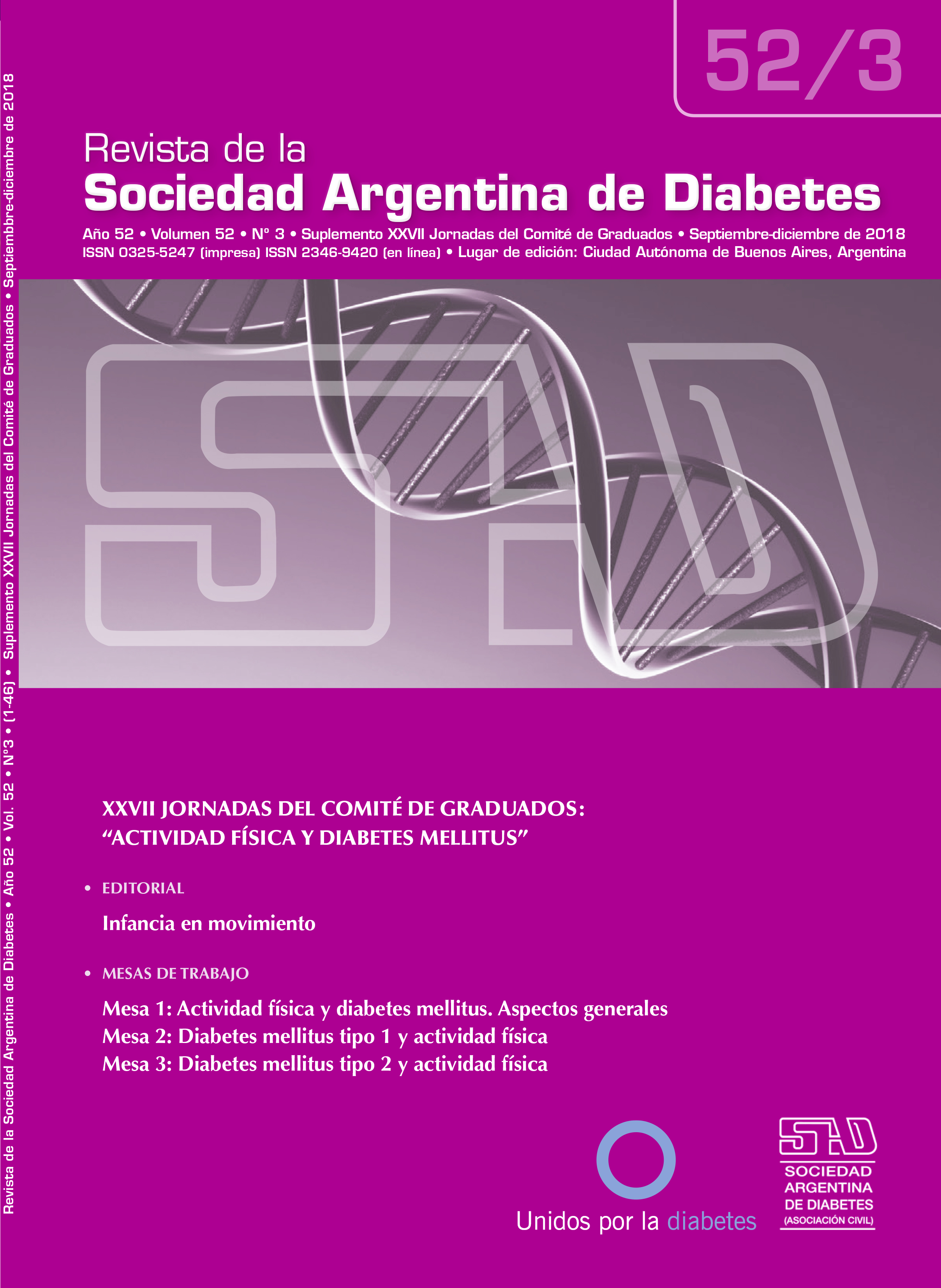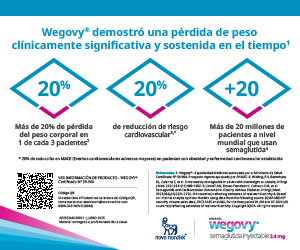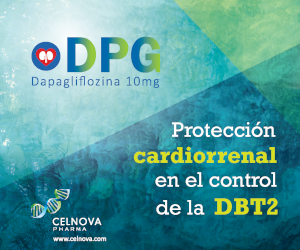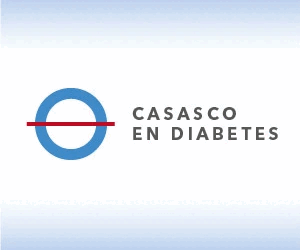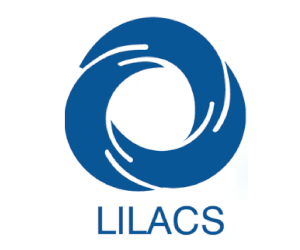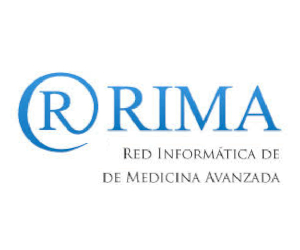Chilhood in movement
DOI:
https://doi.org/10.47196/diab.v52i3Sup.120Keywords:
pediatrics, diabetes mellitus type 1, physical activityAbstract
"The human body is designed to be in motion. As health professionals we must promote a more active lifestyle in our patients", says the Graduate Committee of the Argentine Society of Diabetes (SAD), in this edition dedicated to physical activity. About health promotion, we are the pediatricians, intervening in the early stages of life, who must commit ourselves the most.
References
Quirk H, Blake H, Tennyson R, Randell TL, Glazebrook C. Diabetes Med 2014; 31: 1163-1173.
Huus K, Akerman L, Raustrop A, Ludvigson J. Plos One 2016. Doi: 101371/journal.pone.0156401.
Chaput JP, Saunders TJ, Carson V. Interaction between sleep, movement and other non-movement behaviours in the pathogenesis of childhood obesity. Obesity Re¬views 2017; 18 (Suppl 1): 7-14.
Saunders TJ, Gray CE, Poitras VJ, et al. Combinations of physical activity, sedentary behaviour and sleep: re¬lationships with health indicators in school-aged chil¬dren and youth. Appl Physiol Nutr Metab 2016; 41(6): S283-S293.
Kjeldsen JS, Rosenkilde M, Nielsen SW, et al. Effect of different doses of exercise on sleep duration, sleep effi¬ciency and sleep quality in sedentary, overweight men. Bioenergetics 2013; 2: 108.
Thivel D, Chaput JP. Are post-exercise appetite sensa¬tions and energy intake coupled in children and adoles¬cents? Sports Med 2014; 44: 735-741.
López-Vicente M, García-Aymerich J, Torrent-Pallicer J, et al. Are early physical activity and sedentary behaviours related to working memory at 7 and 14 years of age? J Pediatr 2017; 188: 35-41.
Olesen LG, Kristensen PL, Korsholm L, Froberg K. Phy¬sical activity in children attending preschools. Pediatrics 2013; 132: e1310-e1318.
Bowser J, Martínez-Donate AP, Carrel A, Allen DB, Mo¬berg P. Disparities in fitness and physical activity among children. WMJ 2016; 115 (5): 245-250.
Downloads
Published
Issue
Section
License

This work is licensed under a Creative Commons Attribution-NonCommercial-NoDerivatives 4.0 International License.
Dirección Nacional de Derecho de Autor, Exp. N° 5.333.129. Instituto Nacional de la Propiedad Industrial, Marca «Revista de la Sociedad Argentina de Diabetes - Asociación Civil» N° de concesión 2.605.405 y N° de disposición 1.404/13.
La Revista de la SAD está licenciada bajo Licencia Creative Commons Atribución – No Comercial – Sin Obra Derivada 4.0 Internacional.
Por otra parte, la Revista SAD permite que los autores mantengan los derechos de autor sin restricciones.



